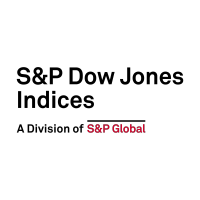Tag Archives: value
Financial Planning Using Indices: From Taxes to Factors
How are advisors putting SPIVA data and factors to work as they build long-term plans to help clients achieve objectives? Delta Wealth Advisors’ Dino Efthimiou and Niko Finnigan join S&P DJI’s Brent Kopp for a practical look at the importance of tax management and the role of indexing in building a comprehensive plan for clients….
- Categories Factors
- Other Tags
S&P U.S. Indices H1 2023: Analyzing Relative Returns to Russell
After a challenging year in 2022, the U.S. equity market saw a strong turnaround in the first half of 2023, with the S&P 500® up 17% since year-end 2022. Exhibit 1 shows that the rebound was also observed across the cap spectrum. Returns in the second quarter outperformed the first quarter after the market shook…
- Categories Equities
- Other Tags
- Categories
- Equities
- Other Tags
Why Multi-Factor Indices in South Africa?
Burton Malkiel, author of the book A Random Walk Down Wall Street, asserted, “The facts suggest that successful market timing is extraordinarily difficult to achieve.”1 Multi-factor indices may be a way of ensuring you are “in the right place at the right time,” participating throughout market cycles without compromising timing or returns. The S&P DJI…
- Categories Factors
- Other Tags
Introducing the S&P SmallCap 600 QVML Top 90% Multi-Factor Index
For market participants seeking to measure small-cap, multi-factor equity premia with greater diversification and historically lower tracking error (TE), S&P DJI has recently launched the S&P SmallCap 600® Quality, Value, Momentum and Low Volatility (QVML) Top 90% Multi-Factor Index. In this blog, we will examine the index construction methodology, historic performance, sector composition and factor…
- Categories Factors
- Other Tags
Collections of Factors
Traditional investors think of portfolios (whether active or indexed) as collections of stocks. We can equally well think of portfolios as collections of factors—defining factor in the academic sense, as an attribute with which excess returns are thought to be associated. If we’re correct in assessing these attributes, it should be possible to explain portfolio…
- Categories Factors
- Other Tags
A Selective Approach to Style: The S&P Pure Growth and Value Indices
S&P Dow Jones Indices (S&P DJI) offers style and pure style indices, which categorize companies based on their growth and value characteristics. We recently published the paper Comparing S&P Style & Pure Style Indices, where we highlighted differences in design, fundamentals and potential applications for both index series. Exhibit 1 summarizes the index construction of…
- Categories Factors
- Other Tags
What Performance Reversals Suggest
Investment results in 2022 were distinctly different from those of the recent past. The S&P 500®, which had doubled in the three years between 2019 and 2021, fell by more than 18% last year, and Exhibit 1 shows that there were regime shifts among factor indices as well. The dominance of Value over Growth in…
- Categories Factors
- Other Tags
The Dow Jones Dividend 100 Indices Part 2: Strong Fundamentals and the Benefits of Diversification
In part one of this series, we highlighted how the stringent dividend sustainability and quality screens of the Dow Jones U.S. Dividend 100 Index and Dow Jones International Dividend 100 Index may have led to their outperformance in 2022 and other inflationary periods. In this installment, we will analyze the positive effects that these screens…
- Categories Factors
- Other Tags
The Dow Jones Dividend 100 Indices Part 1: A Focus on Dividend Sustainability and Quality
Looking back, 2022 was an impressive year for passive dividend indices, both with respect to performance and inflows on the back of rising interest rates. The Dow Jones U.S. Dividend 100 Index and Dow Jones International Dividend 100 Index were two of the standout performers, which may be due to their emphasis on strong fundamentals…
- Categories Factors
- Other Tags
Style, Size, and Skewness
Two of the biggest reversals of 2022 compared to 2021 were the outperformance of smaller caps and the outperformance of value compared to growth. Both of these factors helped drive the S&P 500® Equal Weight Index’s recovery last year, as well as a decline in market concentration. As sector and style exposures are not independent,…
- Categories Factors
- Other Tags
- Categories
- Factors
- Other Tags
















































